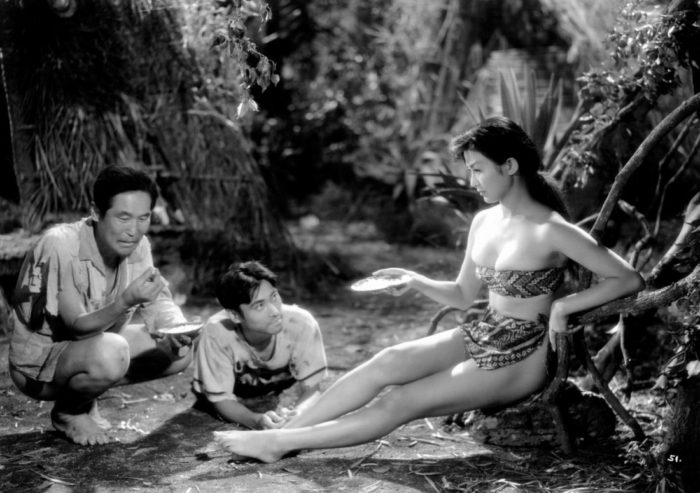“What do you think, men?” Tsuruta turned his bloodshot eyes onto the crowd. “Should we execute traitors who talk of Japan’s defeat?” The crowd roared approval.
The year is 1950, the place the tiny Micronesian island of Anatahan where some thirty Japanese males – conscripts, fishermen and traders – and one woman have been marooned since 1944. Kaoru Ohno’s Cage in the Sea, recently published in a fine English translation, offers an enthralling, lightly-fictionalized account of the real life drama that played out in the intervening years.
Far from being fanatical emperor-worshippers, the hold-outs are ordinary people whose characters buckle and warp in the extraordinary circumstances in which they find themselves. One is a professsional ballad-singer who in civilian life was forced to share his wife with his bed-ridden mentor. Another is a spotty sixteen year old. The woman, Kazuko, is a newly-wed emigrant from Okinawa who soon discovers the power of her sexuality and exploits it to the hilt..
The castaways revert to a stone-age life-style, wandering around in loin-cloths made of leaves and living off bread-fruit and the meat of lizards, giant bats and such fish as they can catch. They learn how to make fire by rubbing sticks and use palm sap to make alcohol. A crashed B-29 Superfortress furnishes them with metal for tools, cloth and, fatefully, pistols.
Military discipline soon crumbles. The extreme conditions produce increasingly extreme behaviour. Lust, jealousy and betrayal come bubbling to the surface. The males quarrel and kill to win the favours of Kazuko, now the “queen bee” of the island. As time passes, the atmosphere grows more like Lord of the Flies than Robinson Crusoe.

Events are framed by the viewpoint of James Johnson, a humane US Navy officer determined to bring the castaways back to Japan safely. It is through his eyes that we learn about the fate of Kazuko, the media frenzy in Japan and the release of the Josef Von Sternberg film, Saga of Anatahan, from which these images come. From his vantage point in the 1990s, an aged Johnson muses on the tragic events and their aftermath.
Ohno has researched the subject in detail. He quotes from English and Japanese sources – letters, newspaper articles and official documents – and several photographs from Johnson’s personal archive are included. His book shines a light into an obscure corner of the Pacific War – and also into aspects of human nature which most of us are fortunate enough never to have to confront.
You can buy it here.

